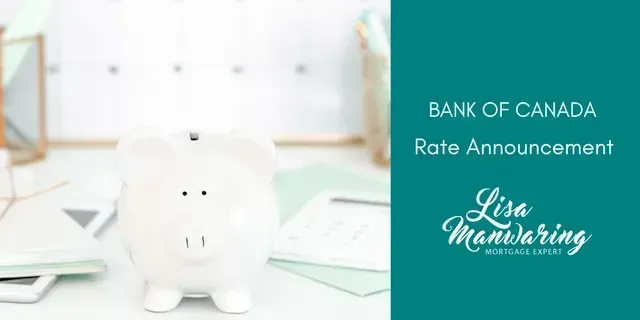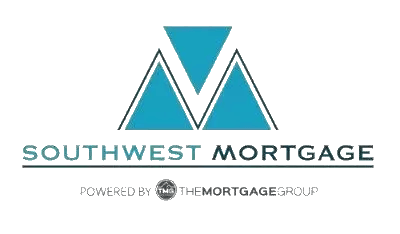Is Now a Good Time To Buy? (Covid-19)
Lisa Manwaring • March 25, 2020

If you’ve been thinking about buying a new home, chances are the instability of the Canadian economy and the impact Covid-19 has you second-guessing yourself. And chances are, at this point in time, you are probably right to do so.
Right now there is uncertainty in the Canadian housing market. We’re in uncharted waters and the full impact of Covid-19 has yet to be seen. Obviously, as people continue to self-isolate, we can expect sales numbers to drop.
But as real estate agents find new ways to make house-hunting accessible online through virtual tours, coupled with incredibly low interest rates, it’s certainly not as cut and dry as might be expected.
So, is right now a good time to buy a home? Well, that’s tough to answer, but what if you looked at it another way?
Instead of basing your buying decision on external market factors, consider asking yourself, is now a good time to buy a home for me?
When you stop looking at the market to determine your timing to buy a home, and instead examine your personal financial situation and your reasons for buying a home, the picture becomes clearer.
Consider asking yourself the following:
- Does buying a new home now put me in a better or worse financial position?
- Is there a chance I could lose my job or get laid off because of Covid-19?
- Have I saved enough money for a downpayment?
- Do I have a plan in place if I get sick and I’m not able to work for any length of time?
- Is there any scenario where I might have to sell quickly and potentially lose money?
- Do I really want to buy, or am I feeling the pressure that if I don’t buy now, I might never be able to?
- Am I scared that if I buy now, the market will crash the second I do?
Regardless if you decide now is a good time to buy, or to wait, consider putting a plan in place! A plan makes all the difference.
If you decide to wait, consider ways to save a little extra money for the downpayment or to squirrel away in your emergency fund. Interest rates won’t be going through the roof anytime soon (slight fluctuations are normal), so don’t feel you need to be in a hurry.
If you decide now is a good time to buy start with a mortgage pre-approval. Contact me anytime; we can go over your financial situation, complete an online mortgage application and put together a plan.
Although Covid-19 has significantly impacted the way we live our lives, life will go on. People will continue to buy and sell houses, albeit maybe not as many for a while. But we all need places to live and we can’t let fear make our decisions for us.
Having a plan in place is what allows you to have certainty in these uncertain times!
RECENT POSTS

Bank of Canada maintains policy rate at 2.1/4%. FOR IMMEDIATE RELEASE Media Relations Ottawa, Ontario December 10, 2025 The Bank of Canada today held its target for the overnight rate at 2.25%, with the Bank Rate at 2.5% and the deposit rate at 2.20%. Major economies around the world continue to show resilience to US trade protectionism, but uncertainty is still high. In the United States, economic growth is being supported by strong consumption and a surge in AI investment. The US government shutdown caused volatility in quarterly growth and delayed the release of some key economic data. Tariffs are causing some upward pressure on US inflation. In the euro area, economic growth has been stronger than expected, with the services sector showing particular resilience. In China, soft domestic demand, including more weakness in the housing market, is weighing on growth. Global financial conditions, oil prices, and the Canadian dollar are all roughly unchanged since the Bank’s October Monetary Policy Report (MPR). Canada’s economy grew by a surprisingly strong 2.6% in the third quarter, even as final domestic demand was flat. The increase in GDP largely reflected volatility in trade. The Bank expects final domestic demand will grow in the fourth quarter, but with an anticipated decline in net exports, GDP will likely be weak. Growth is forecast to pick up in 2026, although uncertainty remains high and large swings in trade may continue to cause quarterly volatility. Canada’s labour market is showing some signs of improvement. Employment has shown solid gains in the past three months and the unemployment rate declined to 6.5% in November. Nevertheless, job markets in trade-sensitive sectors remain weak and economy-wide hiring intentions continue to be subdued. CPI inflation slowed to 2.2% in October, as gasoline prices fell and food prices rose more slowly. CPI inflation has been close to the 2% target for more than a year, while measures of core inflation remain in the range of 2½% to 3%. The Bank assesses that underlying inflation is still around 2½%. In the near term, CPI inflation is likely to be higher due to the effects of last year’s GST/HST holiday on the prices of some goods and services. Looking through this choppiness, the Bank expects ongoing economic slack to roughly offset cost pressures associated with the reconfiguration of trade, keeping CPI inflation close to the 2% target. If inflation and economic activity evolve broadly in line with the October projection, Governing Council sees the current policy rate at about the right level to keep inflation close to 2% while helping the economy through this period of structural adjustment. Uncertainty remains elevated. If the outlook changes, we are prepared to respond. The Bank is focused on ensuring that Canadians continue to have confidence in price stability through this period of global upheaval. Information note The next scheduled date for announcing the overnight rate target is January 28, 2026. The Bank’s next MPR will be released at the same time.

What Is a Second Mortgage, Really? (It’s Not What Most People Think) If you’ve heard the term “second mortgage” and assumed it refers to the next mortgage you take out after your first one ends, you’re not alone. It’s a common misconception—but the reality is a bit different. A second mortgage isn’t about the order of mortgages over time. It’s actually about the number of loans secured against a single property —at the same time. So, What Exactly Is a Second Mortgage? When you first buy a home, your mortgage is registered on the property in first position . This simply means your lender has the primary legal claim to your property if you ever sell it or default. A second mortgage is another loan that’s added on top of your existing mortgage. It’s registered in second position , meaning the lender only gets paid out after the first mortgage is settled. If you sell your home, any proceeds go toward paying off the first mortgage first, then the second one, and any remaining equity is yours. It’s important to note: You still keep your original mortgage and keep making payments on it —the second mortgage is an entirely separate agreement layered on top. Why Would Anyone Take Out a Second Mortgage? There are a few good reasons homeowners choose this route: You want to tap into your home equity without refinancing your existing mortgage. Your current mortgage has great terms (like a low interest rate), and breaking it would trigger hefty penalties. You need access to funds quickly , and a second mortgage is faster and more flexible than refinancing. One common use? Debt consolidation . If you’re juggling high-interest credit card or personal loan debt, a second mortgage can help reduce your overall interest costs and improve monthly cash flow. Is a Second Mortgage Right for You? A second mortgage can be a smart solution in the right situation—but it’s not always the best move. It depends on your current mortgage terms, your equity, and your financial goals. If you’re curious about how a second mortgage could work for your situation—or if you’re considering your options to improve cash flow or access equity—let’s talk. I’d be happy to walk you through it and help you explore the right path forward. Reach out anytime—we’ll figure it out together.


